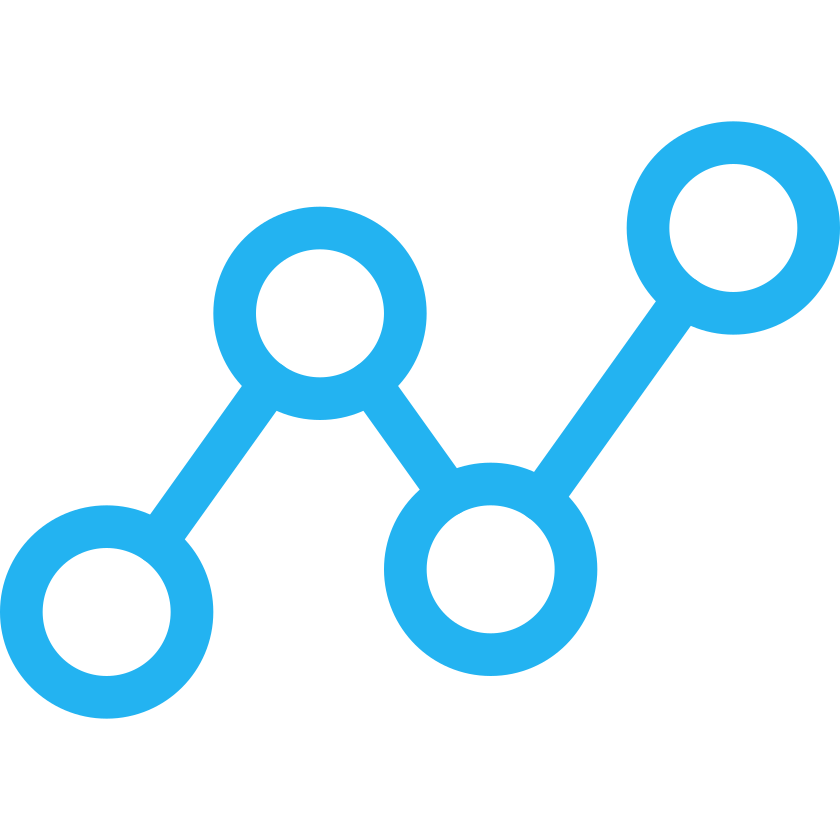Stay ahead in the fast-paced world of web design by understanding the latest trends.
Web design trends come and go, and to stay ahead, it’s crucial for businesses to keep up with the ever-evolving trends. In this article, we will explore the principles of minimalist design and its benefits for improving user experience and page load times, along with examples of minimalist websites. Learn what’s in vogue and what’s becoming outdated, ensuring your website remains fresh, relevant, and visually compelling to users.
Minimalism in web design.
Minimalist design has become increasingly popular in recent years due to its simplicity and elegance. It emphasises the use of open space, clean layouts, and minimal text to create a visually appealing and user-friendly website. Minimalist design focuses on what is essential and eliminates any unnecessary distractions, resulting in a more cohesive and focused user experience.
Benefits of minimalist design:
Minimalist design offers several benefits that can positively impact a website’s performance and overall user experience. Here are a few key advantages:
1. Improved Load Times: Minimalist design gets rid of unnecessary elements, such as excessive graphics, large image files, and complex animations, which can significantly improve page load times. Users expect websites to load quickly, and minimalist design ensures faster loading times, resulting in higher user satisfaction.
2. Enhanced Navigation: Minimalist design prioritises clear and intuitive navigation. By focusing on essential elements, users can easily find the information they need, reducing frustration and increasing the chances of them staying on the website.
3. Improved Mobile Responsiveness: With more and more people accessing websites on mobile devices, minimalist design ensures that websites adapt to different screen sizes seamlessly. By prioritising content and reducing unnecessary elements, minimalist design provides a better mobile experience, leading to higher conversion rates.
4. Improved User Experience: Minimalist design prioritises user-friendliness and simplicity. By removing clutter and unnecessary elements, websites become more visually appealing and easy to navigate, resulting in improved user experience and increased engagement.
Examples of minimalist websites:
Minimalist design can be seen in various industries and across different types of websites. Here are a few examples of minimalist websites that showcase its potential:
1. Apple: Apple’s website is a classic example of minimalist design. It utilises clean layouts, simple typography, and high-quality images to create a visually appealing and user-friendly interface.
2. Apartment Therapy: Apartment Therapy’s website utilises minimalist design principles to create a visually appealing and well-organised blog for home decor enthusiasts. The website features a clean layout, large images, and concise text, making it easy for users to navigate and find inspiration.
3. IKEA: IKEA’s website showcases minimalist design by incorporating clean layouts, simple navigation, and high-quality images. The website focuses on showcasing IKEA’s products, making it easy for users to find exactly what they need.
4. Nike: Nike’s website also embraces minimalist design principles, focusing on showcasing its athletic products. The website features a clean layout, large images, and prominent call-to-action buttons, making it easier for users to browse and purchase products.
Minimalist design is a web design trend that is here to stay. It offers numerous benefits, including improved load times, enhanced navigation, improved mobile responsiveness, and improved user experience. By implementing minimalist design principles, businesses can create visually appealing and user-friendly websites that resonate with their target audience.
Staying up-to-date with the latest web design trends is crucial for creating engaging and visually appealing websites. While it is important to embrace innovative techniques and technologies, it is also essential to know which trends are worth exploring and which ones should be left in the past.
Micro-interactions in web design.
In this next section, we will delve into the concept of micro-interactions and discuss how they enhance user engagement and delight by providing subtle feedback and animations in response to user actions.
Micro-interactions are small, often unnoticed interactions between a user and a digital interface. They are designed to make the user’s experience more engaging and pleasurable by providing them with subtle feedback and visual feedback. These interactions can occur when the user performs an action, such as clicking a button or hovering their mouse over an element. Micro-interactions are often designed to mimic real-world interactions, offering a sense of satisfaction and delight.
Micro-interactions play a crucial role in enhancing user engagement by providing feedback that confirms the user’s actions. When a user clicks a button, micro-interactions can show a subtle animation or highlight the button’s state, indicating that the action has been successfully performed. This immediate feedback helps users feel in control and enhances the overall user experience.
Micro-interactions can also delight users by providing unexpected and delightful surprises. For example, when a user hovers over a button, micro-interactions can make it appear to expand or reveal additional information, adding a playful element to the interaction. These surprises can create a positive and memorable experience for users, making them more likely to return to a website or recommend it to others.
Designing effective micro-interactions.
When designing micro-interactions, it is important to consider factors such as timing, animation, and feedback. The animations should be smooth and seamless, and they should convey the intended message without overwhelming the user. Additionally, the micro-interactions should be tailored to the specific context and function of the interface.
Examples of effective micro-interactions:
1. Button Hover Effects: When a user hovers over a button, it can change colour, subtly animate, or even reveal a hidden menu.
2. Loading Indicators: Micro-interactions can be used to display progress indicators or animations while content is loaded, making the process more engaging.
3. Menu Animations: A menu can expand or slide out when the user clicks or taps a specific area, creating a visually appealing and interactive experience.
4. Search Results Animations: When a user enters a search query, micro-interactions can be used to show search results visually, such as by highlighting matching words or displaying thumbnails of relevant images.
5. Date Picker Animations: Micro-interactions can make date selection more intuitive and engaging by displaying animated calendars or highlighting selected dates.
Micro-interactions are a powerful tool for enhancing user engagement and delight. By providing subtle feedback and animations in response to user actions, they create a visually appealing and interactive user experience. As technology continues to evolve and new trends emerge, it is essential to consider incorporating micro-interactions into our web designs. By embracing this trend, we can create websites that are engaging, intuitive, and memorable for users.
Current trends in web design.
Keeping up with the latest web design trends is crucial for staying ahead of the competition and creating an engaging user experience. This document explores some of the key trends that are gaining popularity and those that are on their way out.
Dark mode.
One trend that is gaining traction is dark mode. Dark mode interfaces have become increasingly popular in recent years, offering a sleek and minimalist aesthetic. This interface design switches the overall colour scheme to a predominantly dark background, with white or lighter-coloured text.
There are several advantages to using dark mode in web design. Firstly, it can help reduce eye strain, particularly on devices with bright screens. Dark mode provides a comfortable viewing experience by adjusting the contrast and brightness levels, making it less straining on the eyes.
Secondly, dark mode can be beneficial for battery life. By minimising the use of white backgrounds, dark mode can help save on battery life, particularly on mobile devices where battery life can be a concern. Additionally, dark mode can create a visually appealing and sleek aesthetic. It can enhance the focus on the main content and create a modern and minimalist appearance.
While dark mode is gaining popularity, it is important to consider your audience and use case. Not all users prefer or benefit from dark mode, and it is important to provide options for customisation. Additionally, dark mode may not be suitable for all websites or content, as it can make certain types of content harder to read.
Flat design.
Flat design, which emerged as a web design trend several years ago, is starting to fade out. While flat design was initially praised for its simplicity and minimalism, it has started to feel outdated. Users have grown accustomed to more interactive and visually appealing designs, and flat design can sometimes feel dull and lifeless.
Therefore, modern web design is moving away from flat design towards a more immersive and responsive design. Websites now incorporate more visually appealing elements, such as gradients, drop shadows, and animations. The use of depth and dimensionality creates a more engaging user experience and enhances the overall visual appeal of a website.
Responsive design.
Responsive design is a fundamental aspect of modern web design, and it remains an essential component of any successful website. With the prevalence of mobile devices and the increasing use of different screen sizes, it is essential to design websites that can adapt to any device screen size.
Responsive design ensures that a website is visually appealing and user-friendly across all devices. It allows for fluid scrolling, intuitive navigation, and a consistent user experience regardless of screen size.
Motion UI.
Motion UI is an emerging web design trend that adds movement and animation to user interface elements. This can add interactivity, create a more engaging experience, and guide users through complex tasks. Motion UI can be used to reveal content, highlight important information, or provide subtle feedback to user interactions.
However, it is important to note that motion UI should be used sparingly and with careful consideration. Overuse of motion UI can be overwhelming and distract from the main content. It is important to strike a balance between animation and simplicity to create a seamless and user-friendly experience.
Single-page websites.
While single-page websites were once a popular trend, they are starting to lose relevance. Single-page websites often present a limited amount of content and rely on scrolling to navigate. However, with the rise of mobile devices and the increasing desire for quick loading times, single-page websites can be too slow and frustrating for users.
Modern web design favours the use of multiple pages or sections, allowing users to navigate and find relevant content more efficiently. This allows users to explore a website at their own pace and easily find what they are looking for.
In conclusion, while dark mode, responsive design, motion UI, and single-page websites are all trends that are on the rise, it is important to consider your audience and use case when implementing these trends. By staying up-to-date with the latest design trends, you can create visually appealing and user-friendly websites that captivate and engage your audience.
Ready to elevate your website’s design? Contact us today to discuss how we can incorporate the latest trends and essential elements into your web presence, ensuring it stands out.




